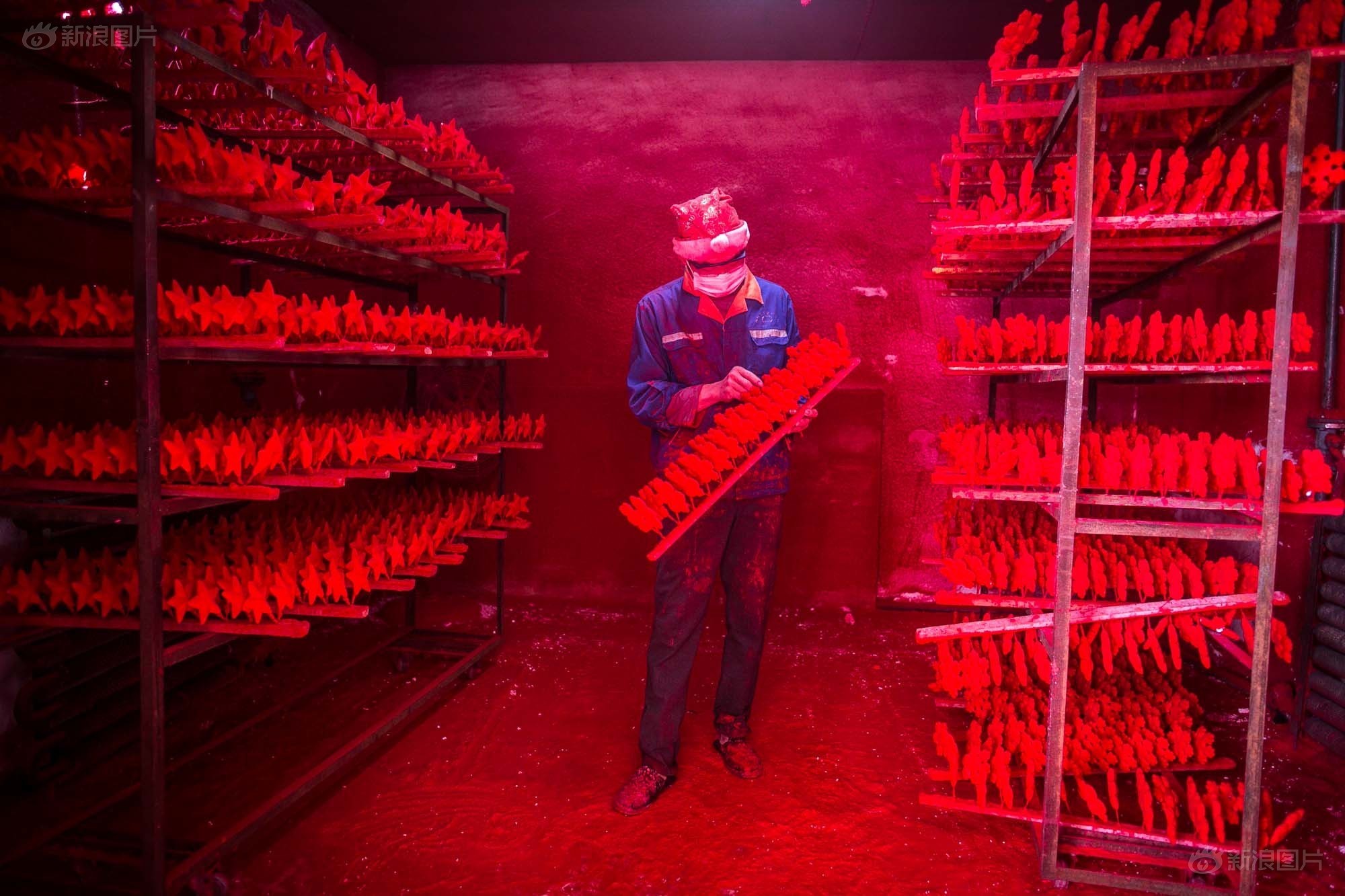In the centre of a roundabout in Guanlan Town there is a statue of a golfer. The plaque beneath it reads: “Congratulations to the people of Guanlan for hosting the 41st World Cup of Golf held in China for the first time from November 9 to 13 1995.” The monument was erected by the world’s largest golf club, Mission Hills Shenzhen. This prestigious golf facility is almost certainly Guanlan’s biggest draw. Yet beyond the teeing grounds and landscaped fairways, the town appears as any other Shenzhen satellite – a messy conglomeration of industrial parks and nondescript apartment blocks. Unlike downtown, where migrants from the provinces have largely taken charge, Shenzhen’s native Hakka still dominate Guanlan. Today they are landlords, not farmers, but remain fiercely proud. Accordingly, the people at Mission Hills were wise to thank the clannish natives for sanctioning the golf tournament. For the smoky factories hide from view ancient villages, shadowed by formidable watchtowers, accommodating time-honoured values.
If one walks around these villages today one gains an insight into China's past. The houses are built close together and neighbours are typically related. In one courtyard we see a group of cousins practising kung fu. Many households raise chickens and grow their own vegetables, despite being the beneficiaries of the Pearl River Delta “boom.” The rattle of mah-jong tiles emanates from almost every window. This is a place so distinctly Chinese, it’s hard to imagine the outside world ever having much of an impact.

[Leo Lee in the 1970s.]
Yet like so much of Guangdong Province during the troubled late-Qing and early Republican-era, sons were sent overseas in search of fortune. These so-called Overseas Chinese built the railroads in America, mined coal in Australia and introduced Guangdong cuisine to the world. Some would never make it home. But others would return to invest in their native town, bringing with them the pretensions, customs and wealth they’d acquired abroad. The remnants of one such remarkable journey can be found in Guanlan’s Niuhu Village in the ancestral home of James Lee.
Around the turn of the twentieth century, entrepreneur James Lee set sail for Jamaica leaving his newlywed bride behind in Guanlan. They would never see each other again. Lee would have four children by a Jamaican mistress. Archong Lee was the firstborn son and like his siblings, he returned to Guanlan to be schooled by James’s Chinese wife in a house built with Jamaican money.
This house is still standing today. It is typical of the era in which it was constructed – stone foundations, with a second floor and an arched roof made largely of wood. Two faded photographs of James Lee’s parents hang on the wall. Sun Yat-sen’s mantra, Bo Ai or “universal love,” (博爱) is set on a plaque in the living room. But there are indications that not all is entrenched in Hakka convention. The kitchen and dining room are painted bright yellow and green. The offbeat rhythm of reggae resonates throughout the ancient dwelling. And the scent of Blue Mountain coffee greets my photographer and I as we enter.
“I make three cups of tea for my family in the mornin’,” James Lee’s grandson Leo Lee says, gesturing to the ancestral shrine. “And a cup o'coffee for me-self.”
After his education in Guanlan, James Lee’s son Archong Lee and young wife May went back to Jamaica to build-up the family business. They would have four children. Their first-born son is Leo. “I was born in Portland, Jamaica in 1941, right at the foot of the Blue Mountain,” Leo Lee espouses, with thick Jamaican enunciation. “I first came [to Guanlan] in 1947. I took a steamboat both ways. It took more than a month. I went home alone and when I reached Japan I got sick and had to come off there for a while.”
By his own admission, Leo never had much of a formal education. By the age of 13 he was working in a family bakery. But his nomadic tendencies surfaced age 20. “I stayed in Jamaica until the end of ‘61 then I joined the RAF [British Royal Airforce]. The Sergeant says to me, ‘why you so happy, you know what you getting yourself into?’ I says ‘yeah, five years holiday with pay!’”
During his service Leo would be posted to England, Wales, the Middle East and Africa before returning to newly-independent Jamaica to work at the family business. “By then we had a supermarket and a restaurant. We were the first to import from China.”
The mid-60s was a time of social upheaval and musical innovation throughout the Western world. “At first we mostly listen to American rhythm and blues,” Lee says of the Jamaican soundscape. “Then we moved into ska.” Ska would evolve into rocksteady and ultimately into reggae. By the early-70s the Jamaican sound was becoming a global phenomenon.

[The Gladiators rehearse, early 80s.]
“Peter Tosh lived nearby my business. A lot of the artists come from that area and they had to pass by my shop to take the bus. There was a lot of good music in the 70s, with real lyrics.”
Lee shows us photographs he’s personally taken, one of Peter Tosh smoking on stage, another of Bob Marley. “That’s him at the Peace Concert.”

There are more homey photos too, like family-friend former Miss World Cindy Breakespeare and her son Damian Marley (son of Bob Marley) socializing in Leo’s Kingston home.
Like a loyal Hakka-Chinese, Leo worked hard for the family business. But he was gradually being absorbed by the music industry exploding around him. After managing some minor acts in the late-60s and 70s as “a hobby,” he set up his own label, Portland Music.
Upstairs, in James Lee’s 90-year-old ancestral home, a rather surreal sight greets us. Besides the works of Mao Zedong and Daosit sage Laozi’s Dadejing, Leo still hoards hundreds of vinyl singles his label pressed, many of which he produced himself.
In 1978 Leo hit the musical big-time when he became the manager of reggae heavyweights The Gladiators. “I worked with them until ‘84. The first tour was in Europe, the second in the US.”
Leo hands us an old press release dated 1983. It reads: “The Gladiators, the pioneer Jamaican reggae group, will begin their first American Tour with a two-night appearance at the famed Martha’s Vineyard concert club, The Hot Tin Roof…”
He then shows us photos of him and the band: “That’s me with [the singer / guitarist] Albert Griffiths in Paris,” he says. “That’s the band in Club 100 London and on the Texas-Mexican border. It was a good experience really, you know, touring with a music group is something special, in it? You get to meet different people and go different places.”
Leo puts on “Hello Carol.” “This was one of their biggest hits, number one in Jamaica.”
After his tenure with The Gladiators, Leo left the music industry behind. “Come the ‘80s the DJ thing was coming in. The music change, you know, degrading of women and what not. And something happen to the morality in that place.” Much of Leo’s extended family had migrated abroad in the 1970s. Though his strong affiliation with Jamaica culture provokes Leo to claim he “never really migrated” he eventually followed suit, spending the next three decades in Canada, the USA, Holland and ultimately China.
“My father retired here [Guanlan],” Leo explains. “I first come back in ’96 and start coming back regular since 2002.” Leo is now the custodian of the ancestral home; spending a few months a year in a place he first visited by steamboat half a century ago.
After our coffee, we take a walk in the hills behind the old village. There is poor quality modern housing just opposite Leo’s house – factory tenements built too quickly, with open sewers. “They call this progress,” he quips sardonically.
I ask him what Guanlan had been like before. “Guanlan was nice. In those days it was farm – rice fields, tea and regular vegetables. There was none of these buildings.”
We hike to an ancient tree, still revered by the Niuhu Hakka. Locals have planted incense sticks at its base and an effigy of the Buddha sits at its rim. The whole area is alive with the buzz of insects. As we climb through the dank, humid air, dragonflies fill the sky and birds swoop, picking off the less assiduous for lunch. It’s a taste of Guanlan past, when nature dominated. At the summit we view a panorama of the town. The factory sprawl reaches Dongguan to the North, and disappears southward towards downtown Shenzhen. Only the occasional forested outcropping remains undeveloped.
On our way back down to Niuhu Village, Leo recalls his father, Archong Lee. “My father was very proud. He loved it here. And he felt he had to prove something to these [Hakka] people. Because he was more or less black, they gave him a hard time. He told me that was one of his main drives in life. He come back in the ‘80s, all these people were rather poor so he helped some of them out," he says.
As if there was any doubt of the Lee family’s impact on Niuhu Village, in 1996 Archong paid for an arched gate at the end of the main road. One might easily pass under it without paying much attention, preferring to recall Guanlan’s iconic golf statue instead. But if one takes a little time to read the welcome sign, it credits Archong by his Chinese name: “Donated by Li Guang Chang in 1996.”
“If I could change anything about it,” Leo says, “I think I’d put a Jamaican flag on it. Because Jamaica made it.”






















0 User Comments